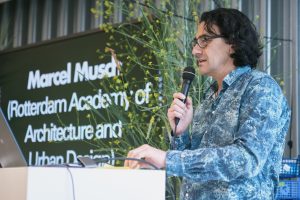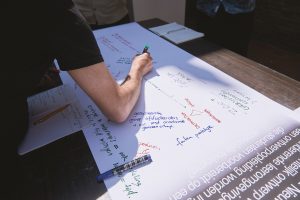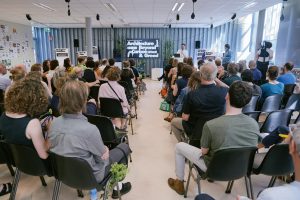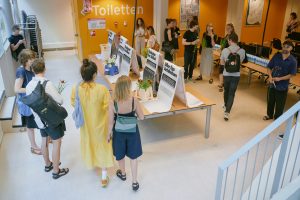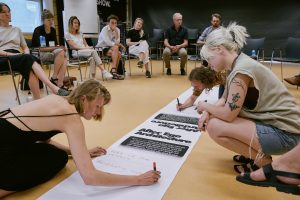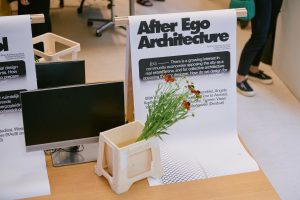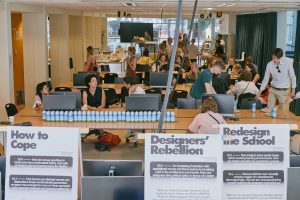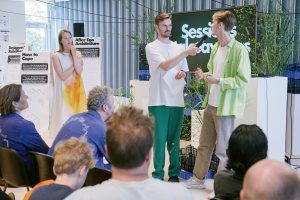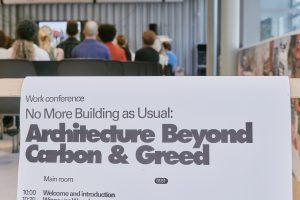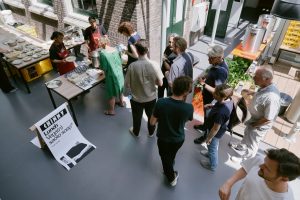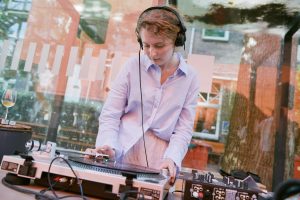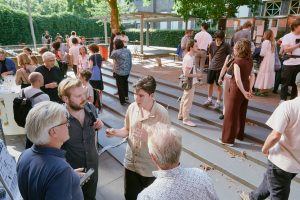No More Building as Usual – a retrospect
10 juli 2023No More Building as Usual: Architecture Beyond Carbon and Greed
On Saturday, June 24, the end of the five-year tenure of Renske van der Stoep and Thijs van Spaandonk as heads of the Masters in Architecture and Urban Design was celebrated in a work conference at the Rotterdam Academy of Architecture and Urbanism. They introduced the agenda “Spatial Design for the New Rotterdam Climate Reality” for the Academy’s educational programme as well as its positioning in the city and the professional community. For the past two and a half years, Mark Minkjan worked alongside Renske and Thijs on a public programme of lectures, conversations and podcast interviews to feed and share their agenda.
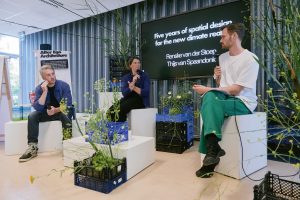
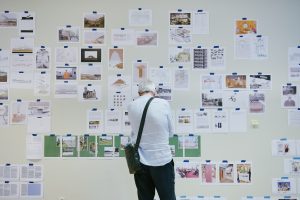
A look back at these five years shows an evolution from raising awareness of the challenges to exploring the relationship between the climate emergency and spatial design. Through a careful reflection on the outcomes of the curriculum – in the form of student research and design projects, and public programmes within and outside the Academy – the foundations are emerging for possible future positions for spatial practitioners in the face of ecological and social challenges. During the work conference, we explored these future positions through three lectures, five breakout sessions, and conversations over food and drinks.
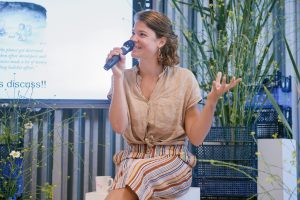
In her lecture, Winne van Woerden (Commons Network) made the case for a culture of degrowth, showing how our addiction to economic growth (including green growth) has propelled planetary destruction. Instead she proposed alternative guiding principles such as intergenerational value and taking wellbeing services off the market. Her call for radical sufficiency resonated throughout the rest of the day.
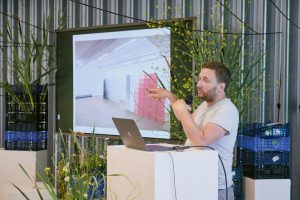
Maarten Gielen looked back at the period since he co-founded the architecture firm Rotor and salvaging company Rotor Deconstruction, in which their practice moved from the curatorial to the materials business. He questioned our standards of comfort and warned against celebrating wonderful ‘pockets of sustainability’ such as Rotor itself, within a larger economy that is not becoming less destructive.
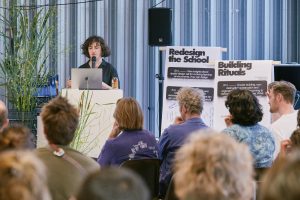
Maria Lisogorskaya presented some of Assemble’s projects, such as the collective’s own studio which is also a professional workshop shared with other creative light industries; the Material Institute New Orleans, for which they not only designed the space but also helped reshape the curriculum; and the recently opened Atelier Luma in Arles, a renovated building rich of biobased local material experiments (rice insulation, sunflower acoustic panels, rammed earth walls pigmented with dust from local limestone quarries). All of Assemble’s projects are characterised by high levels of collaboration and local embeddedness.
In the five breakout sessions, participants were invited to define their position in several domains:
- In How to Cope, two climate psychologists helped people to feel their way through climate depression and ecological grief towards hopeful activism.
- At the circular pavilion that was sourced, designed and built by students, new material protocols, values and aesthetics were discussed in the Building Rituals session.
- In Redesign the School, participants gathered in an underused courtyard at the Academy to discuss how learning environments should evolve to prepare spatial designers for an ecosocial future.
- After Ego Architecture was a session where collective economies opposing the city as real estate arena, and collective architecture opposing the star designer were explored as alternative models and attitudes.
- In Designers’ Rebellion, participants discussed how architects can take collective political action in order to change established norms and forms.
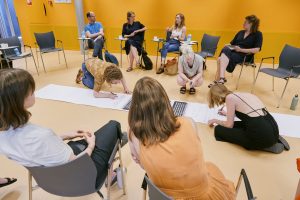
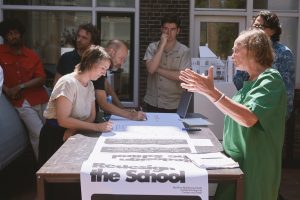
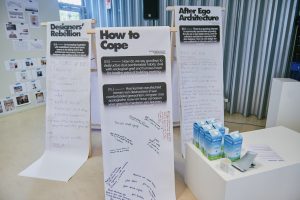
We look back at an energetic day with lively discussions on fundamental challenges, the ways architects and urban designers can commit themselves, and the joy involved in working on alternatives. The different speakers underpinned the need for us as a professional ecosystem to take up a position in this new climate reality. In the words of Maarten Gielen: “To go from we’re interested in to we propose that.”
The Rotterdam Academy of Architecture and Urban Design should be an environment to explore these new proposals with both students and the ecosystem of the professional community, in order to collectively develop the skills and capacities necessary to express the proposals that go beyond building as usual.
The conference also made us experience how the Academy can act as a civic space. A place to gather, to be inspired by others and to exchange positions and ideas. We would love to see the Academy further develop itself as this civic house for the spatial design community to gather and learn. We see this event as just one gathering in a continuous conversation, and hope that it contributed to a more explicit positioning of everyone involved in the professional and personal transformations towards an ecosocial future.
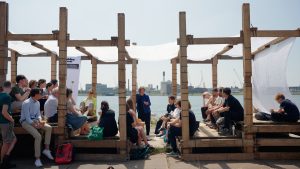
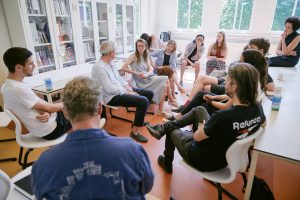
A big thank you all the invitees to the breakout sessions: Anneke Witte and Anette Martens (Klimaatpsychologen), Fatima Eloussari (RAvB), Sanne van Manen (MVRDV / Platform Woonopgave), Luísa Martins (TU Delft), Amal Habti (RAvB), Noortje Weenink (Architecture Biennale Rotterdam / Extinction Rebellion Rotterdam), Janna Bystrykh (Academy of Architecture Amsterdam), Wessel Geysels (RAvB), Jan Jongert (Superuse Studios), Willemijn Lofvers (RAvB), Marcel Musch (RAvB), Maria Lisogorskaya (Assemble), Angela Kortleven (RAvB), Mira Nekova (Time to Access), Izabela Slodka (Studio Iza Slodka), Tiemen Visser (RAvB), Maciej Wieczorkowski (Dividual), Estelle Barriol (Studio ACTE), Charly Blödel (Nieuwe Instituut), Maarten Gielen (Rotor), Roxane van Hoof and Claudio Saccucci (Studio Verter), Edgars Jane (KCAP), Laura van Santen (La-di-da) and Sven Schouten (RAvB), to everyone else who participated in all the conversations, to the main speakers, and to Lieke Maas, Daphne Aimée van Schaijk, Marije Woorts, and everyone on the team for making this wonderful day work.
Fotografie : Ruben Hamelink & Salih Kiliç
Bloemen : Kore Natuurvriendelijke Bloemen en Planten
